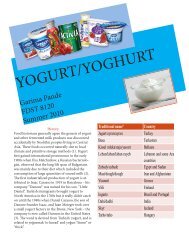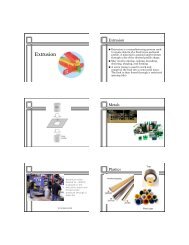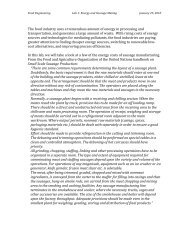Viscometry Lab.pdf
Viscometry Lab.pdf
Viscometry Lab.pdf
Create successful ePaper yourself
Turn your PDF publications into a flip-book with our unique Google optimized e-Paper software.
II. FALLING BALL VISCOMETERS<br />
FDST 8080 <strong>Lab</strong> 2011<br />
One very simple type of instrument is the falling ball viscometer. Here, a glass or metal<br />
ball is allowed to fall through the sample. The more viscous the sample is, the longer it<br />
takes the ball to reach the bottom. In the simplest case, this may be just a graduated<br />
cylinder with a steel ball. Once the ball drops, it will soon reach a terminal velocity once<br />
the force of gravity is countered by the frictional forces due to the fluid. By Stokes law:<br />
! = 2(" s # " 2<br />
%<br />
l )gR<br />
&<br />
'<br />
9$<br />
where η is the viscosity, ρ s is the density of the solid ball, ρ l is the density of the fluid, R is<br />
the ball radius, g the gravitational constant, and υ the terminal velocity. The time it takes<br />
for the ball to fall a given distance is determined with a stopwatch, and determines the<br />
velocity (υ=∆x/∆t).<br />
F = mg<br />
g<br />
F = K!"<br />
f<br />
(<br />
)<br />
*





